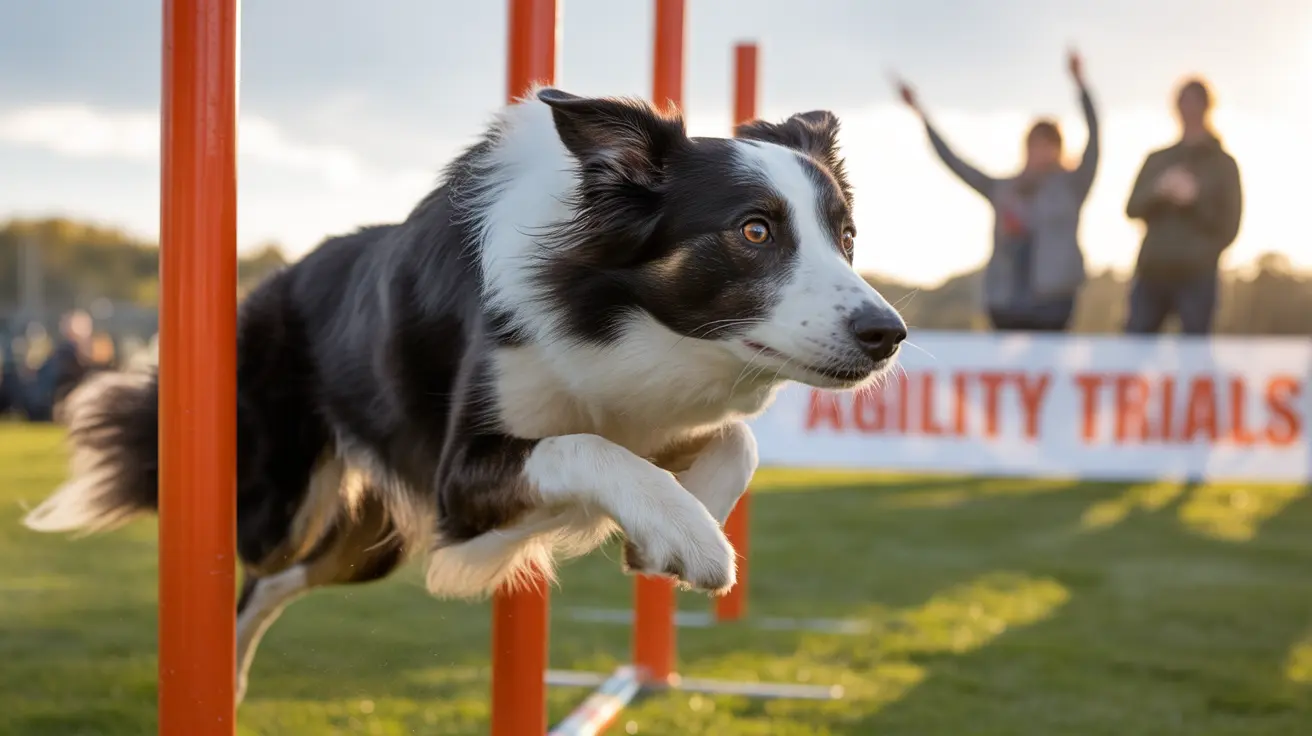Popular Black and White Working Breeds
Border Collie: The Intelligent Herder
Border Collies stand out as the most intelligent of all dog breeds, consistently ranking first in canine intelligence studies. Their black and white coat is their most recognizable feature, though other color variations exist. These dogs require extensive daily exercise and mental stimulation, typically needing up to two hours of activity per day.
Known for their exceptional trainability, Border Collies excel in various activities, including:
- Herding trials
- Agility competitions
- Obedience training
- Advanced trick training
- Canine sports
Siberian Husky: The Arctic Athlete
Siberian Huskies combine striking black and white markings with incredible endurance and a friendly disposition. Originally bred for sledding, these dogs maintain their high energy levels and require significant exercise. Their thick double coat helps them thrive in cold weather but requires regular maintenance.
Family-Friendly Black and White Companions
Boston Terrier: The Gentleman's Dog
Boston Terriers sport a distinctive tuxedo-like coat pattern that earned them the nickname "American Gentleman." These compact dogs adapt well to apartment living and are known for their friendly, quiet nature. Their short coat requires minimal grooming, making them an excellent choice for busy families.
Dalmatian: The Spotted Celebrity
Famous for their unique spotted coat, Dalmatians combine elegance with athletic ability. Their history as carriage dogs makes them natural runners and excellent exercise companions. These social dogs form strong bonds with their families but need consistent exercise to maintain their well-being.
Giant Black and White Breeds
Great Dane: The Gentle Giant
Great Danes in the Harlequin pattern showcase dramatic black and white markings. Despite their imposing size, these dogs are known for their gentle nature and patience with children. They require less exercise than many smaller breeds but need space to move comfortably.
Landseer: The Water-Loving Giant
The Landseer, recognized as a distinct breed in Europe, features a striking black and white coat and impressive size. These gentle giants excel at water activities and make loyal family companions, though their size requires consideration for living space and exercise needs.
Care Considerations for Black and White Breeds
Maintaining the distinctive appearance of black and white dogs requires specific care approaches:
- Regular grooming to keep the coat clean and vibrant
- Protection from sun exposure, especially for white portions
- Appropriate exercise based on breed requirements
- Regular health checkups to monitor breed-specific conditions
Frequently Asked Questions
What are the most popular black and white dog breeds suitable for families?
The most family-friendly black and white dog breeds include Boston Terriers, Dalmatians, and Shetland Sheepdogs. These breeds combine good temperaments with adaptability to family life, though exercise needs vary significantly between breeds.
How much exercise do black and white working breeds like Border Collies and Huskies require daily?
Working breeds typically need 1-2 hours of daily exercise. Border Collies require both physical activity and mental stimulation, while Huskies need vigorous exercise and running opportunities. Both breeds benefit from structured activities and training sessions.
Which black and white dog breeds adapt well to apartment living and require less grooming?
Boston Terriers and French Bulldogs are excellent apartment-friendly options with minimal grooming needs. Their smaller size and moderate exercise requirements make them ideal for urban living.
What common health issues should I watch for in black and white breeds like Dalmatians and Great Danes?
Common health concerns include hip dysplasia in larger breeds, urinary issues in Dalmatians, and bloat in Great Danes. Regular veterinary check-ups and awareness of breed-specific issues are essential for preventive care.
How can I best care for the grooming needs of long-haired black and white dog breeds?
Long-haired breeds require regular brushing (2-3 times weekly), professional grooming every 6-8 weeks, and special attention to preventing matting. Using appropriate brushes and grooming tools specific to coat type is essential for maintenance.






